Last Monday, what a Southwest passenger called a “rollercoaster” flight, came after their Boeing 737 MAX8 plane encountered severe turbulence on departure from Honolulu for the mainland. The video below depicts the audible fear that ensued. At the same time, the passenger gave kudos to the Southwest pilot and crew. There has been no official comment from Southwest about the event.
The video’s author said, “Bumpy rise on #southwestairlines last from Honolulu night !! Pilot and crew were great! Passengers deserve an Oscar for best performance in a disaster film. 😂✈️
Others commented, “Yikes! He’s not kidding about it being like a roller coaster ride- watching the cabin shake and drop in the extreme turbulence looks intense. Hope everyone had their barf bags close at hand for that rough ride. Also, is it just us, or have videos of crazy bad turbulence been taking over social media lately? This stuff is anxiety-inducing…”
While turbulence can be dangerous, it still doesn’t pose a serious threat to the aircraft itself, and as long as you’re buckled into your seat when it strikes, you’re safe from most of the potential risks. Still, heavy turbulence like this is enough to set even the calmest flyers on edge, to say nothing of people with a severe phobia about flying!
@homodrome 😂✈️ #turbulence #airplane #airport #airtravel #gaytravel #bumpyride #scaryride #screaming ♬ original sound – JC
We’ve all heard enough about severe turbulence on Hawaii flights, especially since the epic turbulence event on Hawaiian Airlines in December in which dozens of passengers and crew were injured.
When the pilot makes a turbulence announcement – beware.
As our pilot friends who comment have said, when the pilot comes on the intercom to warn passengers about turbulence, you can typically expect there will be something significant ahead. But while you do expect some rough flying, you still don’t expect this. When terrible turbulence strikes, it can seriously hit hard and be most frightening.


Other recent Hawaii incidents raise concerns and questions.
The issue of turbulence on Hawaii flights was magnified in December’s Hawaiian Airlines mass-injury flight turbulence event, which occurred just before the flight was due to descend on approach to Honolulu. That was followed last month by the United Airlines incident. We’re unsure if that will be classified as turbulence or something else. Nonetheless, the plane plunged following takeoff to within 750 feet of the Pacific Ocean before regaining its climb and heading towards the mainland.
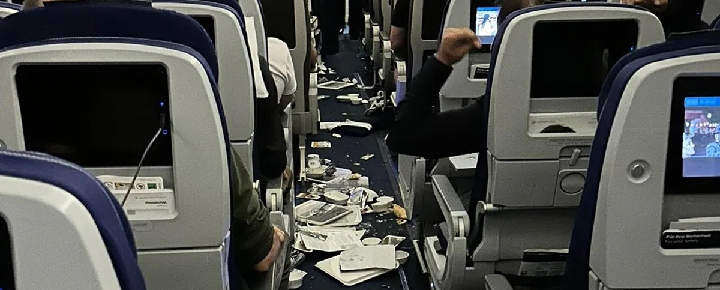

And lastly, three incidents outside of Hawaii caused global concern. First was the Lufthansa A330 (pictured above) that diverted to Washington DC earlier this month after unexpected cruise-level turbulence caused at least seven injuries severe enough to require hospitalization. In that event, some passengers reported not wearing seatbelts and that the turbulence came out of nowhere. It isn’t clear if the seatbelt sign was or was not illuminated at the time.
Second, a woman died earlier this month after the business jet she was flying on encountered “severe turbulence.” There may also have been aircraft issues at fault, it has been reported. The plane diverted to Bradley International Airport in Connecticut. The Bombardier CL30 jet was flying from Keene, New Hampshire to Virginia when the incident occurred, according to the FAA.
And last week, another Southwest flight between Maryland and North Carolina encountered severe turbulence that caused passengers to vomit and more. On the descent into Raleigh, turbulence struck, which resulted in an emergency being declared and the plane diverting to Murtle Beach instead.
Is turbulence that much worse than before?
We aren’t just imagining it. And the topic has certainly become a major conversation point among travelers. Some experts believe this is only going to get worse. A University of Reading team in the UK has been studying this and is believed to be among the world’s leading authorities on the subject. One of the team members there said, “There’s a possibility it could get a lot bumpier. The more temperatures rise, the more likely it is that the turbulence will increase by a greater amount.”
More turbulence and flight changes ahead.
The UK research team suggests there may be three times more turbulence in the period from 2050 to 2080.
What will airlines do? It is suggested that they will make more significant efforts to fly around possible turbulence-inducing weather. That means more fuel, longer flight time, and in the end, more cost to passengers as this phenomenon starts to get factored in.
Case in point. Not long ago, two of the BOH editors were returning to Hawaii from New York with a connection in San Jose. Due to the severe thunderstorm weather, their flight had to fly north to Ottawa, Ontario, instead of west, before continuing to its destination in San Jose. The flight arrived nearly six hours late at SJC due to the diversion and an unexpected fuel stop mid-continent, which the weather diversion necessitated.
Have you experienced turbulence?
Get Breaking Hawaii Travel News
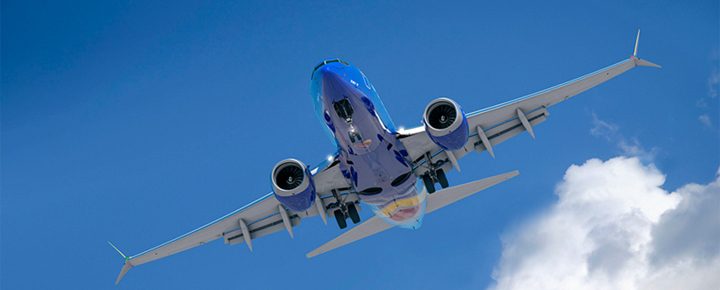
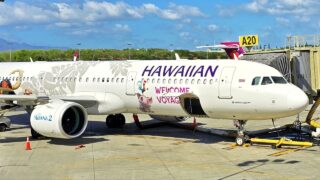

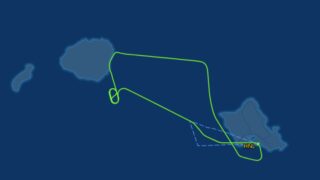
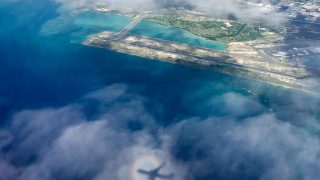
As I have said often on here, friends don’t let friends fly southworst ever!
” One of the team members there said, “There’s a possibility it could get a lot bumpier. The more temperatures rise, the more likely it is that the turbulence will increase by a greater amount.””
what an insane take. a fraction of a degree of a rise in *average global temperatures* cannot possibly cause local turbulence to increase. theres not a place in the world where it is the same temperature at night as in the day, diurnal swings of 40 degrees are common in some areas
if what that “expert” said is true, there would not be flights in the daytime, or tropical areas for that matter.
Hadn’t seen news of this incident; thanks for the heads-up Rob and Jeff.
We should expect turbulence to become more frequent and more severe as climate change increasingly impacts our weather. Planes have to fly through the very same weather that we experience on the ground as catastrophic winds, torrential flooding, and more.
I experienced this same thing on a Southwest flight in November 2021 and it was the most terrifying flight I’ve ever had…..and I don’t fly well anyway! Thought for sure we were goin down, called it Hawaiian Scare-lines!
It’s very strange. Prior to retiring, I used to fly constantly for my job. One thing that I noticed was that I constantly flew to Hawaii without a ripple. In fact, in amazement I would routinely comment to my friends because I couldn’t believe one could go so far and rarely feel a ripple. Just thought it was an anomaly that somehow went with commuting to my favorite islands. Well, that ship has sailed apparently because my last three flights have been progressively rough and my last flight looked exactly like the video you posted. Brutal. A six hour white knuckle flight. Couldn’t believe it lasted that long but believe me, there wasn’t a wink of sleep to be had and as I mentioned, I’m a seasoned traveler so I know of what I .Really bizarre…
Okay, turbulence is real, for sure, been in a fair amount of varying degrees of it whilst flying myself. Maybe I’m weird, but I watched that whole video and it didn’t look “extreme” to me? Sure, it was bumpy, & passengers needed to be buckled securely in their seats, but extreme? I was once flying off of BOS, & we hit serious enough weather that the plane plummeted down a significant enough amount that people screamed. Didn’t ever hear how much, but it was a doozy! 😁. I rather like a bit of rough when flying or cruising. Odd, I know, but I find it a bit fun. 😄 Bottom line is to stay in your seat and buckled in for your flights to be safe, only getting up when really needed and when there are no warnings of turbulence, then back to buckled!
it wasnt nearly as extreme as the clip suggests. the filmer was tilting his camera at crazy angles while his soda can never moved on the tray table that was down
I noticed the can of coke was sitting upright on the traytable and a laptop/tablet on another. While I’m sure it was alarming, it doesn’t look “extreme”
I fully agree here. I was on the flights coming into Honolulu on December 18th from the mainland and they stopped service 2 hours before reaching Hawaii. The fact that the IPAD did not fall over nor his Soda then it seemed like something was up because both would have fallen over and slid off of the tray.
Just knew that some kind of “expert” was going to blame global warming for the perceived increase in turbulence. They may study it but until I see a whole lot more of the data to make sure that they have not used their agenda to justify their conclusions then what they are saying means nothing to me and it sure will not stop me from flying anywhere! 60+ years of flying and not stopping now.
Yes…have experienced turbulence like the TikTok video many times in my lifetime. Nothing unusual but of course, never experienced the one like in December…where passengers & crew got injured or aisle look like the picture you show. I hope I never experience it.
TikTok! Please. I can’t understand anyone who belongs to tiktok that is destroying America. Please find anothr channel to watch videos please. And Watch real news!
The tickok video isn’t even of the flight they are speaking of the article. It’s not even of a flight or aircraft type that southwest uses for Hawaii lol
Thanks for correcting it
No worries by 2050 won’t be any gas and only electric planes the rich can afford. You won’t be able to go anywhere so who cares.
Liam, this is 2023, so I Care And Many Care! A very sad reply from you!
Reality is electric planes will likely lower the cost of tickets. Fuel is one of the highest expenses for all airlines.
Green technology will not only help protect the environment we all need to survive, it can create tremendous new opportunities.
there will never be an electric plane that will have the range to go to hawaii
I don’t have a clue what the future potential is, I’ll leave it to the experts. I do know we went from the Wright Brothers to putting a man on the moon in 65 years and the computing power found in your IPhone would have had to been housed in a computer the size of a small room not that long ago.
The UK research team suggests there may be three times more turbulence in the period from 2050 to 2080.
And if you want to believe “experts” and funded research with an outcome already determined let me know how that works out for.